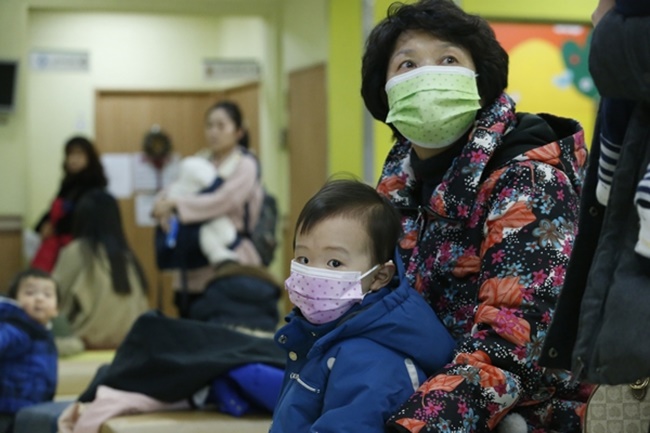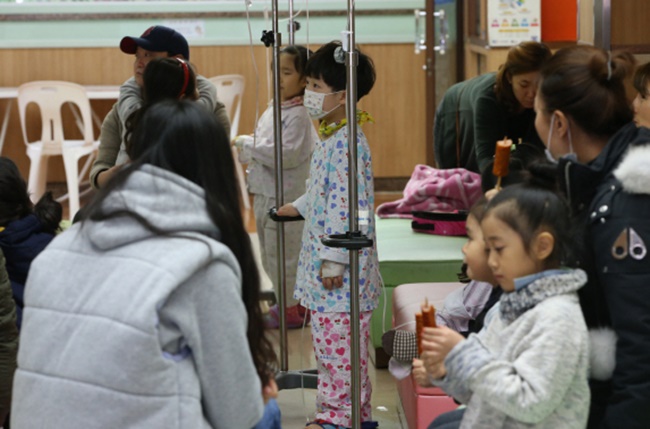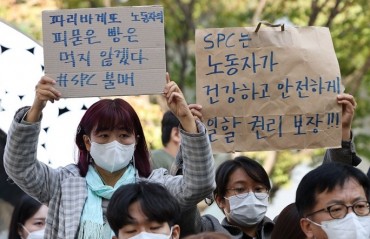
As the number of tuberculosis patients rose to 77 per every 100,000 people in 2016, people are wondering about the underlying impact of the lack of relatively common hygiene etiquette on public health. (Image: Yonhap)
SEOUL, Jan. 23 (Korea Bizwire) — Despite numerous studies that vouch for the effectiveness of cough etiquette, the practice of ‘covering one’s mouth while coughing’ has yet to take root in South Korea.
“You can cough during a performance. I know you can’t help coughing. I would just like you to cough with your mouth covered,” pianist Cho Seong-jin said during a press conference earlier this month, after witnessing audience members cough without covering their mouth during his concert.
Though one of the richest countries in the world, more people are being diagnosed with the flu in South Korea every year, and the country also has the dubious distinction of being the most tuberculosis-prone nation among the OECD member states.
As the number of tuberculosis patients rose to 77 per every 100,000 people in 2016, people are wondering about the underlying impact of the lack of relatively common hygiene etiquette on public health.
“It’s too bad that people are coughing without covering their mouth when the seasonal flu is going around. Why are we not covering our mouths in the subway and in the workplace?” said one frustrated poster who took to the internet to express frustration.
One mother showed concerns over the general lack of hygiene awareness around the country.
“When I was in a hospital waiting room, I saw many children coughing without wearing a mask, and some parents even send their children to nurseries like that. As a mother with a child, I hope other people will take caution,” the mother wrote.

Despite numerous studies that vouch for the effectiveness of cough etiquette, the practice of ‘covering one’s mouth while coughing’ has yet to take root in South Korea. (Image: Kobiz Media)
While health authorities such as the Korea Centers for Disease Control and Prevention (KCDC) are promoting cough etiquette, urging the members of the public to cover their mouth and nose when coughing, the efforts to stop the flu from spreading depend on personal responsibility, which many feel has not been upheld well.
Germs can spread easily in places like schools or on the subway, as each cough or sneeze contains thousands of droplets of saliva that are capable of traveling up to six meters.
Last month, the Gangwon Provincial Office of Education had to issue an influenza warning after flu patients spread the virus to 190 students in the region, prompting schools to take additional caution.
A couple of students diagnosed with tuberculosis in the famous cram school neighborhood of Noryangjin in Seoul during the same month also added to the growing concerns over the lack of effort on the South Korean public’s part to employ proper cough etiquette.
Tuberculosis has been one of the biggest health challenges facing the country.
In 2017, the Korea Centers for Disease Control and Prevention found scores of infants infected with the disease at Monet Woman’s Hospital following a nurse’s diagnosis, prompting lawmakers to propose a bill requiring medical staff to take a tuberculosis test.
With the latest influenza outbreak expected to continue until late spring, the KCDC is urging the public to follow proper cough etiquette by covering one’s mouth and nose when coughing with a tissue or a sleeve, immediately disposing of used tissues and worn masks, washing hands after coughing, and wearing a mask when showing symptoms of respiratory disease.
Following this set of simple rules could significantly reduce the risk of the flu.
In North Chungcheong Province, the number of people suffering from infectious diseases such as the flu, chickenpox, and epidemic eye inflammation dropped by 42 percent last year after stricter hygiene education was implemented in schools.

In 2017, the Korea Centers for Disease Control and Prevention found scores of infants infected with the disease at Monet Woman’s Hospital following a nurse’s diagnosis, prompting lawmakers to propose a bill requiring medical staff to take a tuberculosis test. (Image: Yonhap)
“We promoted the practice of washing hands and taught cough etiquette both in school and at home, which we believe have contributed to the decline of infectious disease,” a regional education official said.
Schools in North Chungcheong Province hold hygiene education classes over five times every year as part of efforts to improve public health.
Hyunsu Yim (hyunsu@koreabizwire.com)







too cold to breath… The weather make me sacre
Thank you for posting such a great article! I found your website perfect for my needs.
It contains wonderful and helpful posts. Keep up the good work!
This is a great little post with some valuable tips. I totally agree. The way you bring passion and engagement into the things you do can really change your outlook on live.
thanks for sharing information